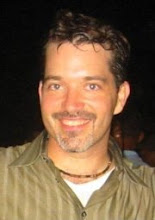[This is part two in a five part series. Click here to read part one and here for part three.]
This tradition seems to have ended last week when the famed Cuban paladar was forced to close its doors.
The reason for La Guarida’s great success and popularity begins with the fact that it is located in the apartment in where the wildly successful, breakthrough Cuban film "Fresa y Chocolate" (Strawberry and Chocolate) was filmed in 1993. Co-directed by Cuba’s late master filmmaker, Tomás “Titón” Gutiérrez Alea, together with Juan Carlos Tabío, the film treated the taboo subject of homosexuality in socialist Cuba in a sensitive and sympathetic way. (Go here to view a great 5-minute clip from the film).
Roughly translated as “The Hideout,” the restaurant’s name originates with the nickname Diego, the homosexual character in the film, gave to his own third-floor apartment in the building. (He also nicknamed his hardworking American refirgerator "Rocco," which will be the subject of a future post in this series).
 The founder, owner, and operator of La Guarida, the affable entrepreneur Enrique Núñez (pictured to the left with his wife), jumped on this opportunity after the film became a world-wide success, initially converting a small part of what had been his parents’ third third-floor apartment in this truly impressive ruin of a building into what up to last week was Cuba’s most renowned paladar.
The founder, owner, and operator of La Guarida, the affable entrepreneur Enrique Núñez (pictured to the left with his wife), jumped on this opportunity after the film became a world-wide success, initially converting a small part of what had been his parents’ third third-floor apartment in this truly impressive ruin of a building into what up to last week was Cuba’s most renowned paladar.In our interview, Enrique explained that following the international release of the film, foreigners began to show up unannounced at the third floor apartment to get a glimpse of the place where the film had been staged.
“People came to the apartment because of the film,” explained Enrique. “Again and again, they would tell us that the film changed their black-and-white image of Cuba, making Cuba real, close, and personal for them.”
As Enrique related to me during our interview back in early 2001, the tale of La Guarida’s origin began when his brother-in-law, Andrés Olea (director's assistant on the film), showed him a copy of the screenplay to an upcoming film based on the Senel Paz short story entitled, “The Wolf, the Forest, and the New Man.”
“As I read the screenplay, it occurred to me that the place Senel was describing was this very apartment. I suggested that they use it to shoot the film. Soon, Titón showed up and looked at the place and decided to do the film here.”
Cuba’s film institute, ICAIC, put his parents up in a separate apartment for the three months it took to shoot the film. After this (early 1993), his parents returned to their apartment and resumed a normal life, unaware of the success the film was destined to have or of the way that success would ultimately effect their lives.
Enrique even admitted that at that point it never crossed his mind that he could later turn the apartment into a successful private restaurant.
The rest, as they say, is history.













































